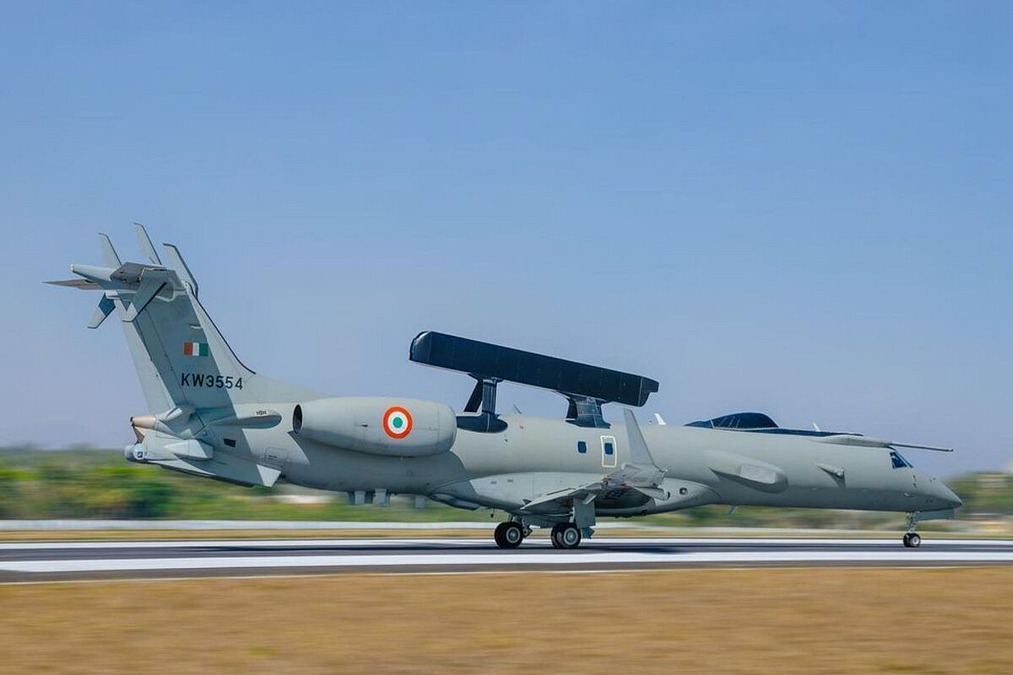In a major push to enhance air combat and surveillance capabilities, the Indian Ministry of Defence is set to acquire six Embraer aircraft from Brazil for conversion into Airborne Early Warning and Control (AEW&C) systems equipped with DRDO-developed Netra Mark 1A AESA radars. This strategic move comes in the wake of Operation Sindoor and is aimed at strengthening India’s conventional deterrence through high-altitude battlefield awareness and rapid response capabilities.
The Defence Acquisition Council (DAC), chaired by Defence Minister Rajnath Singh, will soon review the proposal. The upgraded AEW&C platforms will augment India’s current fleet and address the disparity with Pakistan’s airborne surveillance systems, which include SAAB-2000 Erieye, Chinese ZDK-03, and Falcon DA-20 aircraft.
In parallel, India has approved the wet lease of one KC-135 mid-air refueller from US-based Metrea and accelerated the procurement of six additional refuellers. These aircraft will support sustained air operations over extended distances. Currently, India operates six Russian IL-78 refuellers, the same model as Pakistan’s fleet.
A key motivator for the accelerated procurement is the success of the Indian Air Force during the May 7–10 Operation Sindoor, where it conducted precision strikes on terror camps and Pakistani military installations across 13 airbases, stretching from Peshawar to Hyderabad. India’s targeting capabilities were significantly enabled by drones and real-time data sharing, underscoring the need for more robust airborne warning systems and refuelling platforms.
Operation Sindoor also yielded a rare intelligence windfall. Indian forces recovered Chinese and Turkish weapons, including the PL-15 air-to-air missile, SH-15 howitzers, Fatah rockets, and the Turkish-built YIHA drone. These systems are now being analyzed by Indian defence scientists, making India the only country with war-tested data on key Chinese platforms such as the J-10 and JF-17 fighters, HQ-9 air defence systems, and performance of its own Rafale jets in live combat conditions.
India’s defence planners, during a high-level meeting on June 7, concluded that Pakistan is likely to further expand its capabilities with Chinese and Turkish assistance. China is supplying Yuan-class submarines, armed drones, and frigates, while Turkey is building naval corvettes and upgrading Pakistani submarines and F-16 fighters.
Defence experts warn that Pakistan, having suffered significant losses in Operation Sindoor, may prepare for a more coordinated military and terrorist response in the future. India’s assessment does not rule out the possibility of mass casualty attacks by Pakistan-based jihadist groups. Operation Bunyan-um-Marsoos, Pakistan’s failed counteroffensive, collapsed within eight hours despite ambitious aims to cripple India within 48 hours, according to Chief of Defence Staff Gen Anil Chauhan.
The latest developments highlight India’s resolve to preempt future threats through technology-driven preparedness and strategic force multipliers.













